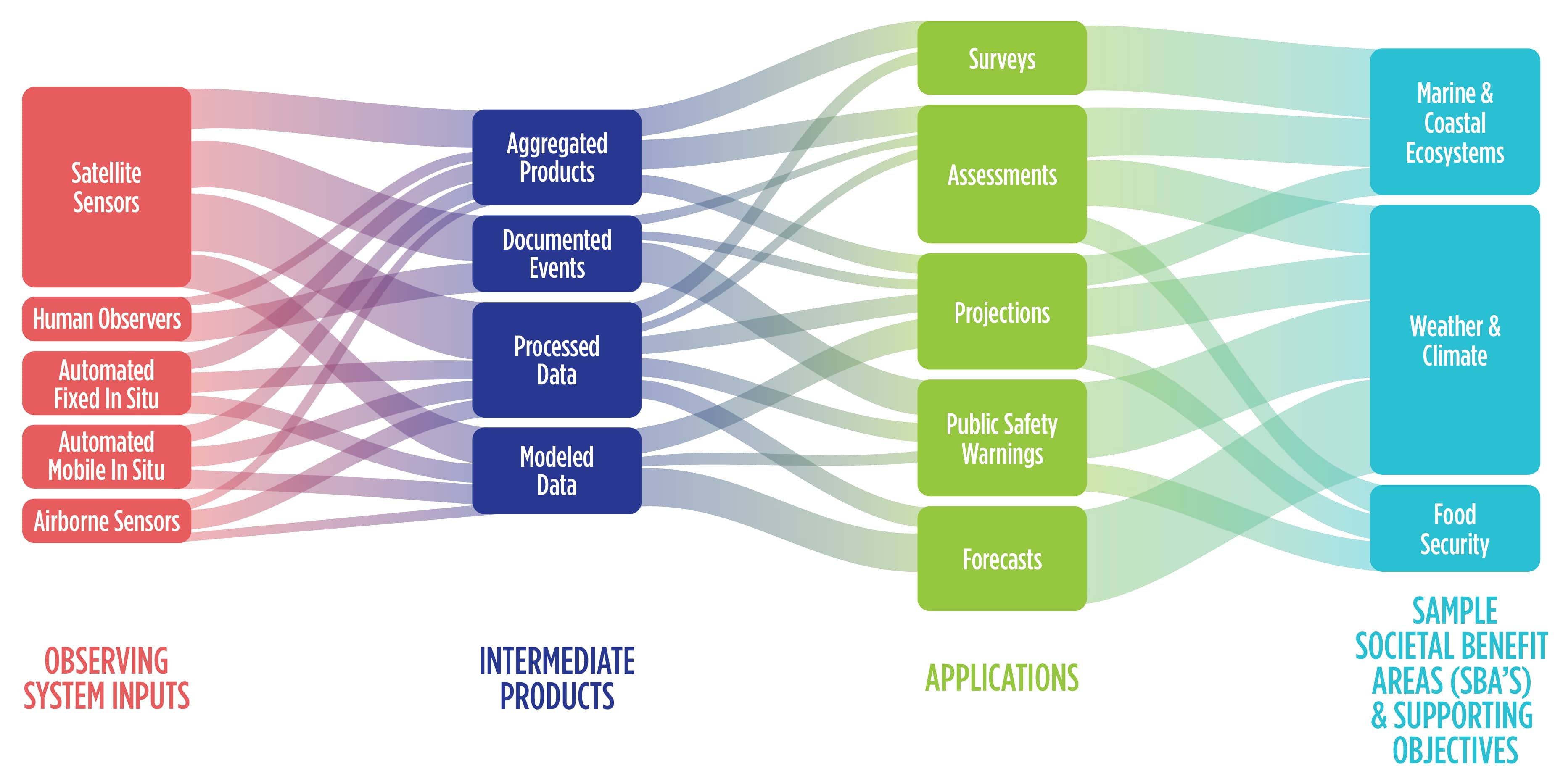
Current Arctic observations yield valuable information and data that influence community resilience, global models and forecasts, national security decisions, and economic prosperity. However, observations are distributed across a complex suite of networks and are often constrained by a lack of long-term funding, infrastructure, capacity building, and coordination. No single agency or country can fulfill the needs and requirements of this rapidly changing region.1
Rather, in order to make strategic improvements to the Arctic observing system and support broadly shared benefits, decision-makers require a comprehensive evidence base that systematically identifies gaps and opportunities for optimized investment.
These analyses must recognize the interconnected nature of Arctic observations and their connection to delivering public value across a diverse range of decision-makers.
US AON's Benefit tool allows scientists and communities to illustrate the value of observing and data systems and illuminate critical gaps.
Through expert elicitation, US AON's Benefit Tool systematically links observational inputs (i.e. satellite data or in situ measurements) to the data product and application outputs they support, weighting the relative impact of each input. The desired outcomes are specified by a benefit framework.
The resulting diagram creates a compelling visual representation of the observing system. While individual evaluations are more narrowly focused, a growing library of visualizations can begin to show cross-functional and cross-discipline observing system strengths and gaps.
Applying the Benefit Tool
US AON convened an Expert Committee to inform the development of the Benefit Tool and underlying methods. The group documented use cases to describe existing and potential Benefit Tool users and how each group would use the Benefit Tool. While many of these goals are supported by the current version of the tool, further improvements to the methods and software are needed to fully support all user groups.
For information about ongoing and completed case studies please see the gaps evaluation and risks and hazards pages.
Access the Benefit Tool
The online tool is available now: www.usaon.org/apps/benefit-tool
It is currently available as a minimum viable product meaning that it has the basic functionality for early adopters to use the software, validate the idea, and provide feedback. US AON has been testing a few case studies in the tool to identify bugs and opportunities for improvement. Specific software needs are cataloged and prioritized in the project GitHub. The Benefit Tool is an open-source project.